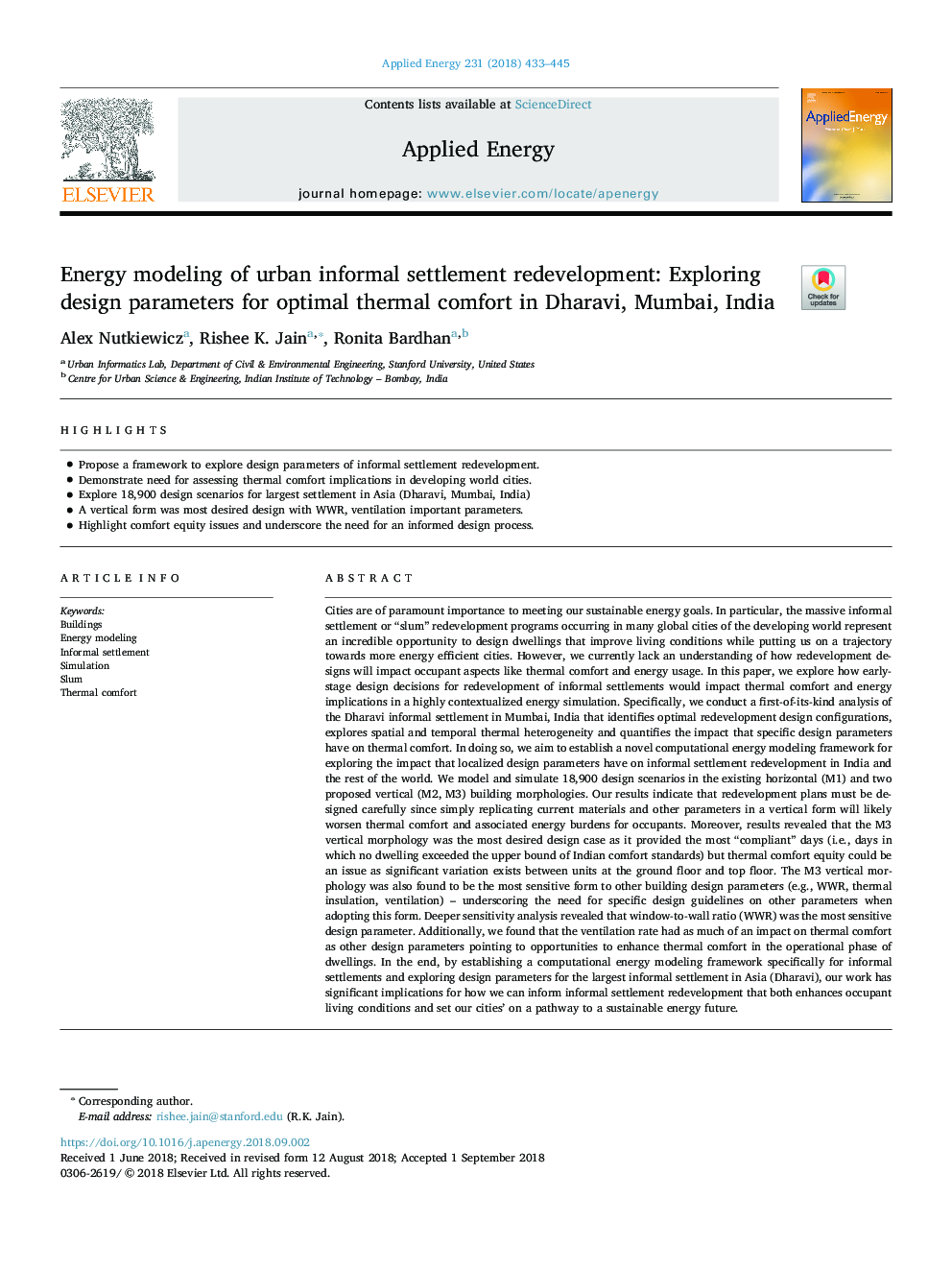| کد مقاله | کد نشریه | سال انتشار | مقاله انگلیسی | نسخه تمام متن |
|---|---|---|---|---|
| 10225281 | 1701164 | 2018 | 13 صفحه PDF | دانلود رایگان |
عنوان انگلیسی مقاله ISI
Energy modeling of urban informal settlement redevelopment: Exploring design parameters for optimal thermal comfort in Dharavi, Mumbai, India
ترجمه فارسی عنوان
مدلسازی انرژی توسعه مجدد شهری غیررسمی شهری: بررسی پارامترهای طراحی برای آسایش حرارتی مطلوب در دموی، هندوستان
دانلود مقاله + سفارش ترجمه
دانلود مقاله ISI انگلیسی
رایگان برای ایرانیان
کلمات کلیدی
ساختمان ها، مدلسازی انرژی، سکونت غیر رسمی، شبیه سازی، لاغر راحتی حرارتی،
موضوعات مرتبط
مهندسی و علوم پایه
مهندسی انرژی
مهندسی انرژی و فناوری های برق
چکیده انگلیسی
Cities are of paramount importance to meeting our sustainable energy goals. In particular, the massive informal settlement or “slum” redevelopment programs occurring in many global cities of the developing world represent an incredible opportunity to design dwellings that improve living conditions while putting us on a trajectory towards more energy efficient cities. However, we currently lack an understanding of how redevelopment designs will impact occupant aspects like thermal comfort and energy usage. In this paper, we explore how early-stage design decisions for redevelopment of informal settlements would impact thermal comfort and energy implications in a highly contextualized energy simulation. Specifically, we conduct a first-of-its-kind analysis of the Dharavi informal settlement in Mumbai, India that identifies optimal redevelopment design configurations, explores spatial and temporal thermal heterogeneity and quantifies the impact that specific design parameters have on thermal comfort. In doing so, we aim to establish a novel computational energy modeling framework for exploring the impact that localized design parameters have on informal settlement redevelopment in India and the rest of the world. We model and simulate 18,900 design scenarios in the existing horizontal (M1) and two proposed vertical (M2, M3) building morphologies. Our results indicate that redevelopment plans must be designed carefully since simply replicating current materials and other parameters in a vertical form will likely worsen thermal comfort and associated energy burdens for occupants. Moreover, results revealed that the M3 vertical morphology was the most desired design case as it provided the most “compliant” days (i.e., days in which no dwelling exceeded the upper bound of Indian comfort standards) but thermal comfort equity could be an issue as significant variation exists between units at the ground floor and top floor. The M3 vertical morphology was also found to be the most sensitive form to other building design parameters (e.g., WWR, thermal insulation, ventilation) - underscoring the need for specific design guidelines on other parameters when adopting this form. Deeper sensitivity analysis revealed that window-to-wall ratio (WWR) was the most sensitive design parameter. Additionally, we found that the ventilation rate had as much of an impact on thermal comfort as other design parameters pointing to opportunities to enhance thermal comfort in the operational phase of dwellings. In the end, by establishing a computational energy modeling framework specifically for informal settlements and exploring design parameters for the largest informal settlement in Asia (Dharavi), our work has significant implications for how we can inform informal settlement redevelopment that both enhances occupant living conditions and set our cities' on a pathway to a sustainable energy future.
ناشر
Database: Elsevier - ScienceDirect (ساینس دایرکت)
Journal: Applied Energy - Volume 231, 1 December 2018, Pages 433-445
Journal: Applied Energy - Volume 231, 1 December 2018, Pages 433-445
نویسندگان
Alex Nutkiewicz, Rishee K. Jain, Ronita Bardhan,
